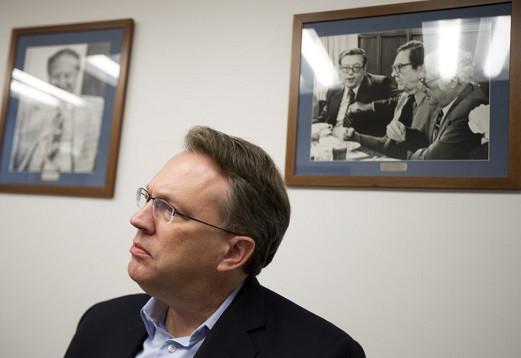
The Federal Reserve on Feb. 18 formally adopted sweeping new rules that will limit the ability of its top officials to invest in financial markets, a change intended to prevent conflicts of interest involving investments affected by Fed policies.
The stricter rules were developed after an outcry last year over questionable trades that were made by several top Fed policymakers.
Under the new rules, Fed officials may not invest in individual stocks, bonds or cryptocurrencies and are limited to diversified investments such as mutual funds. They must provide 45 days’ notice of any trade and secure approval of such trades. And they will have to provide public notice of any trades made in the previous 30 days.
Fed Chair Jerome Powell announced the rules in October 2021 after ethics questions engulfed several high-ranking policymakers about trades they had made in securities that stood to be affected by Fed actions at the time. The central bank’s decisions on interest rates and bank regulations can cause significant swings in the prices of stocks, bonds and other securities.
Powell himself had come under fire after it was revealed that two regional Federal Reserve Bank presidents traded stocks and other investments in the spring of 2020 while the Fed was taking expansive steps to boost the economy and calm financial markets. As a result, the trades raised the possibility of conflicts of interest, because the two officials could have profited from the Fed’s actions.
The new rules will also cover senior vice presidents at the Fed’s 12 regional banks, research directors at the regional banks and senior staff members at the Fed in Washington as well as their spouses. The rules will take effect May 1.
Meanwhile, New York Fed President John Williams told reporters on Feb. 18 that policymakers can “move steadily” to get the key lending rate off zero and back to more normal levels over the next year or more.
With high inflation hitting the U.S. economy, it is time for the central bank to raise the benchmark borrowing rate, but there is no reason for a “big” early move, he said.
His comment downplayed expectations among many economists and investors that the Fed could move aggressively to raise interest rates by a half point in March to combat inflation, rather than its usual quarter-point increase.
Last month, inflation hit 7.5 percent in January compared with a year ago.
Lael Brainard, a member of the Fed’s Board of Governors, said that she expected the Fed would “initiate a series of rate increases.”
Brainard is close to Powell and has been nominated for vice chair, the Fed’s number-two position.
Krishna Guha, an analyst at investment bank Evercore ISI, said that Brainard “broadly endorsed” Wall Street’s expectations that the Fed will hike rates six times this year.